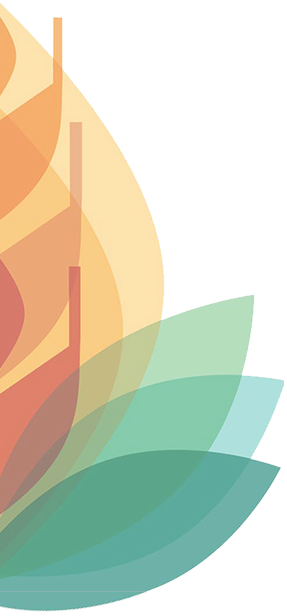

Dr Andy Jarvis
TRANSFORMING LIVES AND LIVELIHOODS:
The Digital Revolution in Agriculture
7-8 August 2017, Canberra

| Conference Home Topic Overview Sir John Crawford Address Conference Program Speakers and Chairs Keynote Listeners Conference Scholars Conference & Scholar Sponsors Conference Media Registration Fees |
Dr Andy Jarvis
Andy has 10 years experience of scientific research in developing countries to support the goals of alleviating poverty, adapting to climate change and protecting the environment. His research has focused on data-driven policy analysis on a variety of topics from agrobiodiversity conservation to climate impacts and adaptation. Over the past ten years Dr. Jarvis has published over 90 articles, book chapters or books, with over 40 of these in peer-reviewed articles published in international journals. In 2003 Dr. Jarvis won the Crop Science Society of America (CSSA) C-8 Genetic Resources award for best research paper stemming from his work on conservation prioritization research for wild peanuts in Latin America, and in 2009 received the prestigious Ebbe Nielsen award for innovative research in bioinformatics and biosystematics. Dr Andy Jarvis Paper Crawford Fund Conference 2017 How to digitalise Agricultural Systems in the Developing WorldAbstract In rural Nepal recently, lots of the smallholders I visited took selfies with me on their smartphones, sharing them on social media. Until recently, it was the other way around. It was an epiphany moment: if the tech revolution has now reached smallholders, the data revolution will surely follow. Yet the agriculture sector still lags behind in the data revolution. In the US, a recent report by McKinsey placed agriculture dead last out of 23 sectors that they analysed with respect to the extent to which they are harnessing the opportunities of “digitalization”. The report argues that it is no coincidence that the sector highest in terms of digitalization are also showing the highest economic growth (such as in finance and media). For the developing world, the picture is likely even worse. Mobile money in East Africa is transforming the finance sector, yet the farmer has very limited access to digital services that help him or her better manage crops and livestock. Agriculture in Africa is only touching the surface of digitalization – markets are largely informal, extension is face-to-face, and farm data either non-existent or completely off grid. Many of the successes of digitalization in agriculture have been riding on the shirt tails of mechanization – sensors on tractors is where much of the innovation is today. It is the means to gather information, rapidly analyse and adjust management, whilst the internet of things means the data is getting transmitted and feeding the cloud with invaluable information to better tailor precision farming. Whilst this model may be very appropriate for commercial and mechanized large scale farming, it’s not readily transferrable to the 570 million smallholder farmers in the world. Alternative visions for digital agriculture are needed, and there are a number of game-changers in the mix right now. First, smartphone penetration and 3G networks are sweeping across rural areas, and this opens a wealth of opportunities to kick start the data ecosystem. They become the node for information exchange. Second, satellite images are on the cusp of becoming fit for purpose in agriculture. Their spatial resolution can finally detect meaningful patterns in the field, and the return periods are such that we can link satellite images potentially with activities in the field in nearer real time. And where satellites struggle, drones can often do the job at limited cost. And thirdly, our analytical capacity to make sense of the dirty data agriculture tends to generate is now greatly enhanced. By combining multiple data streams, and analyzing in new ways, we can now pick out some of the critical signals to spur better decisions in the agricultural sector, be it at field level or national policy decisions. Unfortunately, a number of key impediments are still holding back a democratic data revolution that reaches the marginalized smallholder farmer. Data itself is a barrier. You need some data to be able to say something useful, yet data on site-specific farming practices, socio-economic conditions of farmers, gender-related factors and others is often hard to come by. Better use of existing data is needed to start with – open data initiatives need to be strengthened, and C:/ drives need to be liberated. Another impediment is that much of the successes in developed countries are closely tied to private sector input supplies and machinery, yet in the smallholder context such services are in their infancy, and the reach of the private sector remains limited. And an alternative service provider, public extension, is likewise severely limited in reach with just a tiny fraction of farmers having access. There is exciting innovation in some regions (e.g. the i-Hub in Nairobi) with a boon of private sector data-intelligence related services providing farmers with data services, but few of these start-ups reach scale, and failure rates are too high. There is also a danger of poor quality services proliferating and giving data-driven farming a bad name. Research can help develop better open access methods, APIs to additional high quality data layers, and thus support the emerging private sector to maintain high quality standards. The enabling environment can also be improved – greater investment in data-related agricultural R+D is needed, and training needs to be improved to develop a new generation of agronomists who are fully data and analytics literate. With the building of greater capacity in people and their institutions, digital agriculture can be mainstreamed into extension programs, agricultural R+D, and contribute to a stronger private sector in data related services to agriculture. At the CGIAR Platform for Big Data in Agriculture, we have identified 4 areas of work that are ripe for disruption, and are currently calling for novel partnerships to form that combine research and agricultural development to solve some of these intractable problems. These Inspire challenges which are being launched this week provide the opportunity to receive US$100k grants to trial out risky approaches that 1) reveal food systems, 2) monitor pests and diseases, 3) disrupt impact assessment, and 4) empower data-driven farming. We are tremendously excited about the prospects of big data in agriculture. The lack of “digitalization” can only be seen as an enormous opportunity. The time is now to digitalize agriculture, and democratize the benefits not only to those few with a tractor, but to explore different pathways that are inclusive of the 570m smallholders who are producing 70% of global food supply. |
 Dr. Andy Jarvis is the Director of the Decision and Policy Analysis Area in the International Centre for Tropical Agriculture (CIAT) and is a Flagship Leader on the CGIAR Research Program for Climate Change, Agriculture and Food Security (CCAFS), based in Cali, Colombia. Andy is also the Co-Pioneer of the CGIAR Platform on Big Data in Agriculture, a US$31m 6-year initiative to make agricultural development faster, more efficient and imact at greater scale through use of ICTs and big data approaches.
Dr. Andy Jarvis is the Director of the Decision and Policy Analysis Area in the International Centre for Tropical Agriculture (CIAT) and is a Flagship Leader on the CGIAR Research Program for Climate Change, Agriculture and Food Security (CCAFS), based in Cali, Colombia. Andy is also the Co-Pioneer of the CGIAR Platform on Big Data in Agriculture, a US$31m 6-year initiative to make agricultural development faster, more efficient and imact at greater scale through use of ICTs and big data approaches.